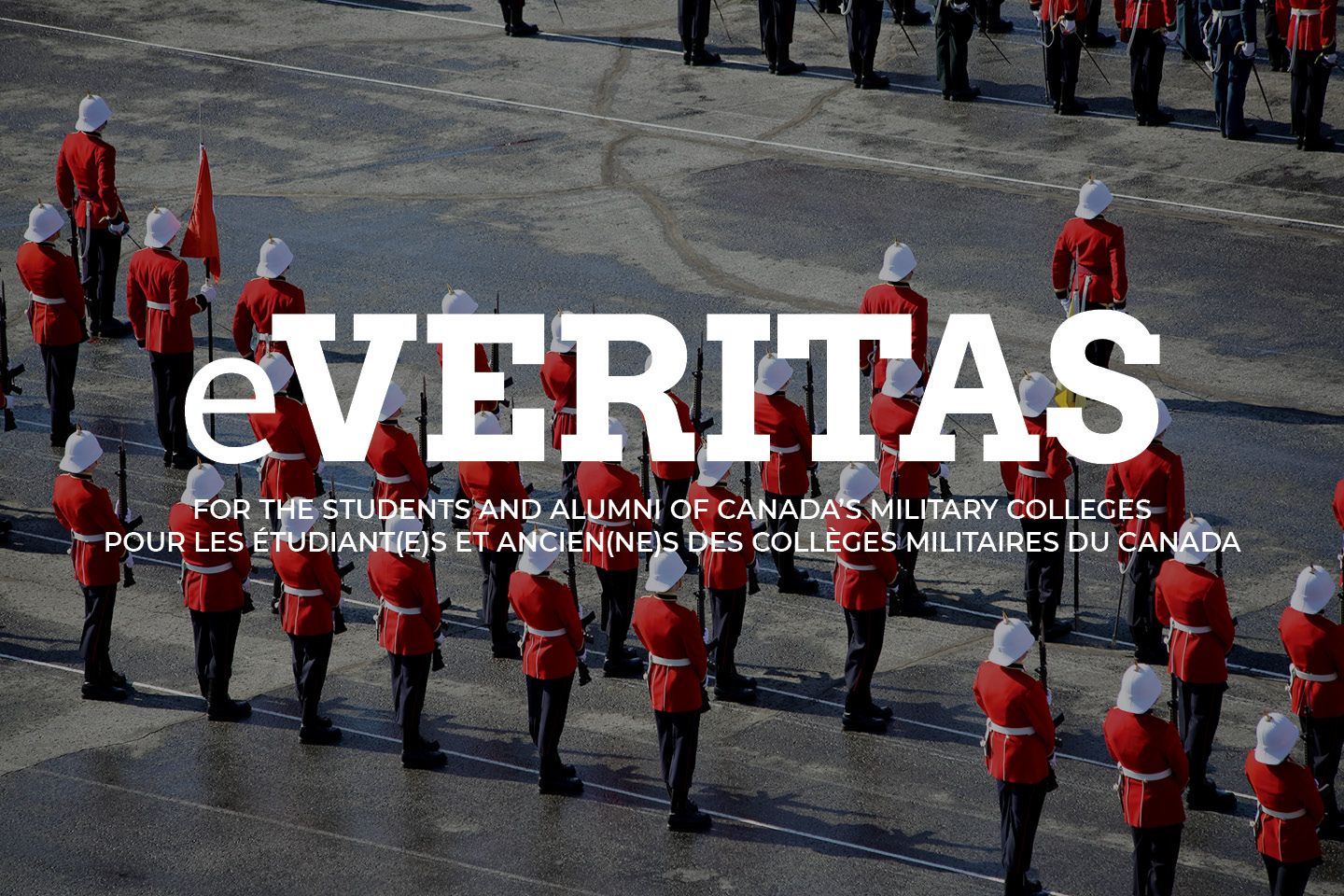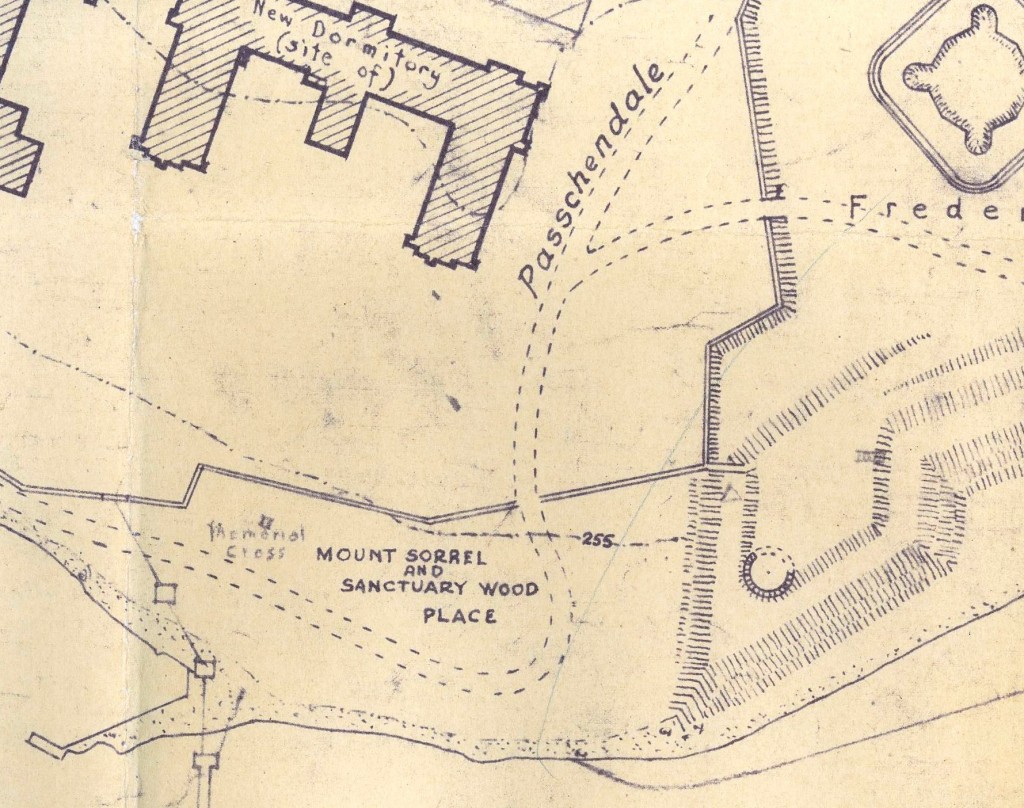
Following is a short article about First World War place names that were once used at the College.
(This comes from Ross McKenzie digging out an old 1934 Site Plan of RMC to look up info on the construction dates for Yeo Hall.)
Ross had no idea that there had been so many of these names in use and thought that with the 100th anniversary of the War almost upon us that your readers might find this to be of interest as well.
The image is, of course, just a small portion of the complete Site Plan and was chosen as an example illustration of the use of Great War names. The building marked, “New Dormitory (site of)”, is actually the excavation site of Fort Haldimand Dormitory. Although the hole was dug in 1934 the actual construction was delayed some 15 years.
Echoes of the Great War
By: Ross McKenzie – Museum Curator

Those familiar with College history are probably aware that these Memorials were, for the most part, the initiatives of 151 Major-General Sir Archibald C. Macdonell, KCB, CMG, DSO, the last wartime GOC of the 1st Canadian Division and RMC Commandant, 1919 to1925. What is not familiar, except perhaps to those of us with very long memories, is that our two memorial roadway are just the surviving remnants of what was once an extensive system of Great War memorial names for College roads and physical features.
The Museum holds a 1934 College Site Plan which shows the memorial names that were once in use.
A small wharf (no longer existent) on the west side of the Peninsula, roughly in front of the Commandant’s House, was the Ypres Pier. The open field, south of the Commandant’s House and now occupied in part by Crerar Crescent and the Fort Brant Dormitory, was named Hill 70 Plateau. The western shoreline area around the present-day site of the Sabre Jet Monument was Langemark Place, while the point of high ground, where the College Observatory was sited, was Gravenstafaal Ridge. A proposed road (running roughly along the same line as the current sidewalk in front of Massey Library) was to be Byng Avenue. The two surviving memorial roads, Amiens Avenue and Passchendale Drive make their appearance at this time as proposed or partial completed roadways. Our anglicised spelling of Passchendaele, usage apparently unique to RMC, makes its appearance on this 1934 chart.
The last memorial was Mount Sorrel and Sanctuary Wood Place, the name given to the area just outside the NW corner of Fort Frederick. Originally sited here were the Vimy Ridge Memorial Crosses of the 13th and the 21st Battalions. (For the story on these Crosses see the posting by Victoria Edwards in the 14 July 2013 eVeritas.)
Time heals all wounds and, in the hundred years since the outbreak of the Great War, its horrors and psychological traumas have passed from living memory. Just as these memories have slipped away over time, so too have the Great War place names that were once such a prevalent part of the RMC landscape. Although the names are gone the courage and sacrifice of our forefathers should never be forgotten.
Blow out you bugles over the rich Dead,
There’s none of these so lowly or poor of old,
But dying has made us rarer gifts than gold.


